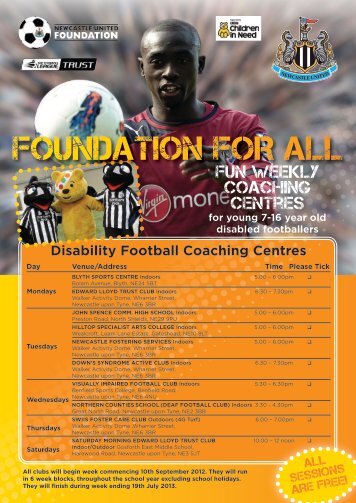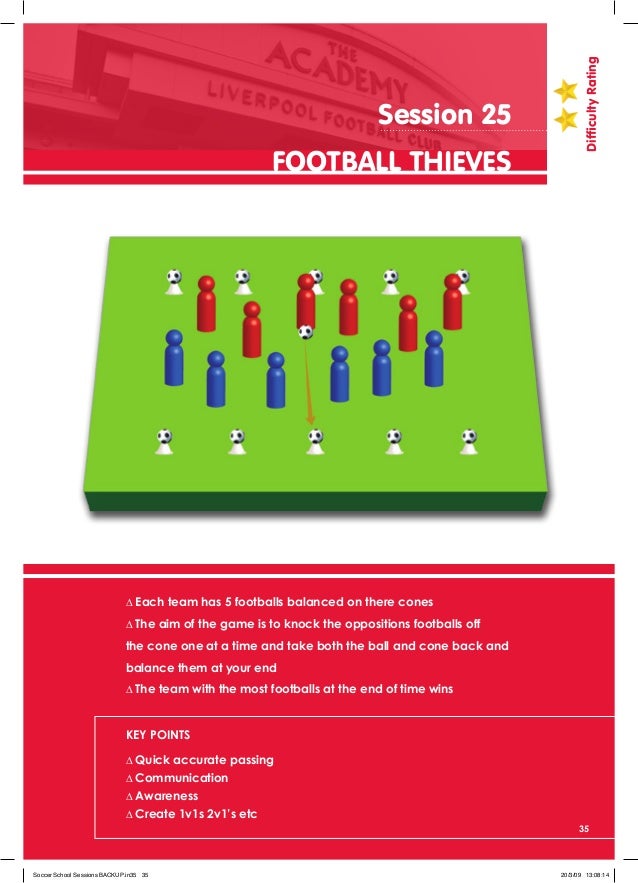Football Coaches Manual
Mcculloch chainsaw manual. The purpose of this coaching manual is to serve as a support tool for coaches implementing a football-based project for children engaged in, removed from. “This manual is everything I was looking for, and them some. Coach Fore's manual contains literally everything you will need to run a successful football program.
Chris Fore of was kind enough to send over his Outside the Lines Manual for me to look over and put to use. This is a collection of over 100 documents that coaches need to use throughout the year. If you have ever been a Head Coach, or spent much time around your Head Coach, you know that they have an ever-growing list of off-field responsibilities. Your reward for rising to the top of the ladder is our sport is to, well, be distracted by everything but the very thing you got into this for – coaching football! Coach Fore’s Manual is a great resource. He has collected all of the different documents he has used as Athletic Director and Head Football Coach at Capistrano Valley Christian Schools in San Juan Capistrano, and since May of 2012 as the Athletic Director at Excelsior High School in Victorville, California. The documents contained are not brilliant, they are not something that most of us could never figure out ourselves.
The point is, you don’t have to sit there and figure it out. It’s already been done for you. Need a depth chart?
Pull it up, fill it in. Player Interviews? Coaches Evaluation? Print it off. Post Season Awards Banquet? Everything you need. Equipment Inventory?
There’s even a letter to send for the kid who somehow “lost” his jersey. It’s the stuff you have to do, but you would rather not waste time on it. Each document in the will require editing to fit it to your unique situation and program. They are templates, but templates can be an invaluable time saver. Whether you’re looking for practice plans, stat sheets, or trying to organize your own coaching philosophy, you’ll find a document in here to help get it done. The one that we’re all looking for right now, though, is probably the on-field stuff. There’s plenty of it in the manual.

Coach Fore has included:. A template for cards to put in your wrist coach. Depth charts on a convenient template to keep them in one place. Points of emphasis for each phase of Special Teams. A “Two-Point” Chart to know when to make the call to go for it. A sheet of on-field Coaching Responsibilities so that all of your staff are contributing in the right places.
Sheets for keeping track of play calling during the game (a lifesaver when it’s time to tag film, by the way) I was really impressed with just how much was included. Coach Fore’s manual has been a big help just in the last couple of weeks for our program. Whenever a need for some sort of document comes up, I just pull up the Outside the Lines Manual documents and find the one we need. Check out to and purchase it.
My discussed why drill manuals are important and how to take them into the 21st century by using. If you aren’t ready to tackle the technology side yet, stick to what you know and work your way into it. But when you’re ready, Technique can be the piece that helps take your athletes to the next level. Drill manuals are applicable to any sport, not just football.
They provide coaches with a point of reference on which to build. Some coaches will criticize the amount of work that goes into creating a drill manual, but I’m here to explain why it’s worth it. The longer you coach, the more drills you come across to incorporate into your practices. At some point, you’ll be at practice and know there is a drill you want to run but won’t be able to remember how effective it was or why.
As time goes by, all the details of that specific drill start to fade as you accumulate more information. This is where a drill manual comes in. No one knows you better than yourself, and that’s what makes a drill manual so unique and beneficial. It’s the evolution of your football world on paper, your coaching masterpiece. Yes, crafting a drill manual can be time consuming and it requires work, but I’m not proposing you sit down and complete it one setting.
It takes time to create, develop and add modifications. When you need to work on a certain football position you can look at your drill manual and find a section of drills at your disposal. It is not only a coaching resource that you create for yourself but also your staff. It is a valuable communication tool.
I am sharing with you what I include in my drill manual as well as a preview of a drill from my Back to the Basics: Football Drill Manual due to be released early next year. I personally have a drill manual for every position.
When I first started coaching as a graduate assistant I decided I wanted to learn all aspects of football: offense, defense, and special teams. How could I be an effective coach and lead the team if I didn’t have full knowledge of every position? Just like with teaching, a coach can only improve with knowledge from learning and from experience. In all my travels, working camps, and going to coaches’ clinics three questions continually come up:. How do I beat a certain defensive or offensive formation or play?. What’s a good drill to use to help a certain position or group of players improve?.
How do I handle new coaches and what do I give them? My answer: have a drill manual!
A drill manual benefits you in the following ways:. Team improves against competition. Builds a player’s confidence. Improves staff communication. Identifies ineffective drills. Uses time more efficiently.
Makes up for a lack of staff and resources. Helps for smooth staff change transitions Drill manuals apply to every level of football because the offensive or defensive coordinator can tell the staff exactly what they want them to do during their individual sessions or group time with that position. Here’s an example:. A coach tells an assistant he wants a drill for linebackers so the offensive linemen don’t get their hands on them. I recommend my linebacker drill example that improves a linebacker’s ability to get off the blocks better. The assistant coach can either look at the drill book and decide if this drill works every time or if he needs a better drill than last week because the players didn’t improve. The coach consults into his drill manual for linebackers and look under the section about getting off blocks.
Practice moves smoothly without constant interruptions. Middle school, youth and flag football benefit from a drill manual because coaches at those levels typically have less knowledge of coaching and it helps fill in the gaps. Just because a person played that position back in high school or they are good playing a video game doesn’t make them an All-American coach. Click for an example from my linebacker drill manual. Here’s how to get started:.
Name each position or team that this manual will help. Break down each section by drill for a specific group so you don’t have to look around for a certain drill. Decide how you want to order your drills. Some coaches will put the them in alphabetical order while others will just list a table of contents.
I like having it in sections so either after practice or while watching film so I can look at the manual and snag a drill to use to improve on the next day. Go into the specifics of the drill. You might have your own little spice or flare to include.
Here is the outline I use for my drill manual:. Name of Drill: What are you calling the drill?. Position: What player(s) would benefit from this drill?.
Drill Speed Level: This is important to have as a safety component. The speed of a drill will go a long way in building confidence and also how successfully they will be practicing the drill. Equipment Needed: What do you need for this drill to work?. Set-Up: How is the drill arranged? It is very important to make sure the drill is arranged correctly.
Relativeness to the Game: How is the drill helping the athlete? Is it making them a better player during live action?. Coaching Points: What key learning objectives should the coach make sure the athletes learn or what they should look for to take with them on the football field?. Modifications of the Drill: Coaches need to be able to make adjustments on the fly because the game moves fast. Make any changes to the drill that allow athletes to be more successful. Now that football is in full swing, keep track of what drills you use and how effective they are. By the end of the season you’ll have your own drill manual.
I’m continually compiling drills for various sports I coach to make sure the players are well-prepared and ready to be on the field. It’s never too late to start. I have written a book called Back to the Basics: Football Drill Manual. It is comprised of the most successful drills I have used over the years in an easy to read format. Keep an eye out for the release early next year. Anthony Stone is a Physical Education teacher in Rockford, IL and Quarterbacks Coach at Boylan High School. He was also the Defensive Coordinator and Assistant Head Coach for the Women’s Australian National Outback 2017 Team and writes blogs for Firstdown Playbook.
In July 2016, he was named to the list. He has presented at IAPHERD, the top physical education convention in Illinois, on how to get students moving with his Games Galore presentations. He has also presented at the Chicago Glazier Clinics on quarterbacks & special teams.
Football Coaches Manual

He was the defensive coordinator for the 2010 U.S. Women’s National Tackle Football Team, winners of the IFAF Women’s World Championship in which Team USA won its three games by a combined score of 201-0. Stone has coached in the CIFL and the IWFL Leagues as well as Beloit College (linebackers/special teams coordinator) and Rockford University (quarterbacks/wide receivers). Stone has also coached football at the youth, middle school and high school level. He will be putting on fundamental youth football camps around the world in 2017. Please contact him to bring his “Back to the Basics Football Camp” to a city near you. Follow him on Twitter.